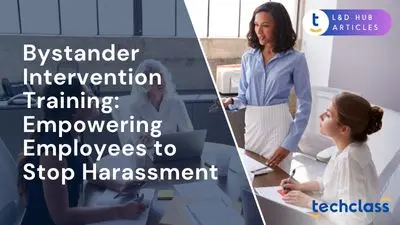
Professional associations thrive when they deliver continuous learning and development opportunities to their members. In fact, recent industry research found that 51% of association members prioritize certifications and ongoing training as a key benefit of membership. Providing engaging education not only adds value, it also boosts member retention – lack of engagement and perceived low value are top reasons nearly half of associations cite for membership non-renewals. A robust Learning Management System (LMS) tailored for associations can address these needs by centralizing learning content, tracking member progress, and enhancing the overall learning experience.
But not all LMS platforms are created equal. Association leaders, HR professionals, and enterprise decision-makers need to know which features truly make a difference for member education. From delivering multimedia courses to integrating with membership databases, the right features ensure your LMS supports members’ professional growth and your organization’s goals. Below, we explore the top LMS features that enable effective association member education and engagement.
At the core of any LMS is the ability to create and manage educational content with ease. Association staff should be able to design courses without needing advanced technical skills. Look for an LMS that offers built-in course authoring tools and a user-friendly interface for uploading and organizing content. This allows your team to develop courses directly on the platform, ensuring the material is stored securely and presented in a polished format. An effective authoring tool will support a variety of content types, text, videos, images, slide presentations, and more, often with simple drag-and-drop functionality. This multimedia support helps cater to different learning styles and keeps courses engaging.
Content standards compliance is another critical aspect of content management. Your LMS should support eLearning standards like SCORM and xAPI, which ensure that courses you create or import will function across different systems without compatibility issues. By adhering to these standards, associations can integrate off-the-shelf course content or migrate existing learning materials into the new LMS seamlessly. Additionally, a great LMS for associations may allow creation of learning portals or segments, essentially the ability to set up multiple sub-portals or tracks for different member groups, chapters, or departments. This way, you can deliver targeted content to specific audiences (for example, separate learning paths for new members, advanced professionals, or specific interest groups) while managing it all from one platform. Finally, ensure the LMS provides a mobile-responsive design, so that all courses and materials automatically adapt to any device. Busy members should be able to access training on their laptop, tablet, or smartphone with equal ease. By prioritizing intuitive course creation tools and flexible content delivery, your association can continuously offer fresh, relevant learning experiences to members without technical roadblocks.
No education program is complete without a way to evaluate learning outcomes. That’s why strong assessment features are a top LMS requirement for association member education. The platform should enable you to create quizzes, tests, and knowledge checks easily, using various question formats (multiple-choice, true/false, matching, short answer, etc.). An intuitive assessment builder lets instructors upload existing questions or craft new ones on the fly, ideally building a question bank that can be reused and categorized by topic or difficulty. Robust assessment authoring capabilities save time and help ensure your exams cover all necessary content areas.
Equally important is what happens after the test. Look for an LMS that provides automated grading and instant feedback for objective question types. Immediate results allow learners to gauge their understanding and receive explanations for correct answers. For the association, automated scoring and recording of results streamlines the administrative workload. Advanced platforms even support analysis of assessment data, for instance, generating item statistics that show how many users got each question right, or identifying topics where many learners struggle. This kind of analytics on quiz results can help you refine course material over time (e.g. flagging questions that might be too hard or content areas that need more emphasis).
Finally, consider exam security and proctoring features if your association offers high-stakes certification exams. Some LMS solutions integrate proctoring tools or allow timed, closed-book exam sessions to uphold integrity. Whether it’s a quick end-of-module quiz or a comprehensive final exam, robust assessment tools ensure your members can validate their learning, and your organization can confidently measure educational impact.
Many associations exist to help members earn and maintain professional credentials. Thus, an essential LMS feature is the ability to manage certifications, credits, and transcripts. The LMS should allow you to designate courses or learning modules as credit-bearing and issue certificates upon completion. Members benefit greatly from a system that automatically generates certificates (printable or digital) when they finish a course or pass an exam, providing tangible proof of their achievement. For fields like healthcare, finance, or legal professions where continuing education (CE) credits are required, the LMS must support tracking of credit hours and possibly set expirations for certification renewal.
An effective association LMS will maintain a personal transcript or learning history for each member. This transcript should log all courses completed, credits earned, and certifications attained through the association’s learning programs. Members should be able to easily access their transcript to review their progress or submit proof to licensing boards if needed. On the admin side, having all this data centralized makes it simple to run reports on who has met certain requirements or who may be due for retraining.
A unique need for associations is enabling members to record learning completed outside of the association. For instance, your members might attend external conferences, webinars, or courses and still want those credits counted toward their professional development. A top-notch LMS can allow external credit claiming, where members can input details of an outside learning activity (with documentation) and request credit within the system. After an approval process, those external credits can appear on the member’s transcript alongside association-provided courses. This feature encourages members to see the association as the central hub for all their continuing education. It also helps the association get a more complete picture of members’ professional learning activities. By facilitating certification programs and comprehensive credit tracking, your LMS becomes an indispensable tool for members advancing their careers.
Learning in associations isn’t just a solo journey, it’s also about networking, mentorship, and peer-to-peer knowledge sharing. Social learning features in an LMS can greatly enhance member engagement by fostering a community atmosphere. Look for tools like discussion forums, message boards, or chat rooms built into the platform. These allow learners to discuss course topics, ask questions, and share insights with fellow members and instructors. For example, you might enable a discussion thread after each lesson or host a moderated forum where members can post tips and questions related to a certification exam. Such interactions mimic the valuable hallway conversations and networking that occur at in-person events, helping members feel connected even when learning online.
Another useful feature is the ability to run live webinars or virtual events through the LMS. Some systems integrate with webinar platforms (Zoom, Webex, etc.) or have native virtual classroom tools. This allows associations to host live training sessions, guest speaker webinars, or virtual workshops as part of the learning program. During these live sessions, features like real-time Q&A, polls, or breakout rooms can replicate classroom interactivity. Members who cannot travel to an in-person seminar can still participate in real time, maintaining a sense of involvement with the association’s educational offerings.
Encouraging social learning also means enabling members to learn from each other. An LMS that supports user-generated content or peer sharing can be valuable. For instance, members might upload case studies, templates, or resources that others in the community can learn from. Mentorship programs can be facilitated by allowing members to connect through the platform and work together on learning goals. All these community features drive engagement: when learners feel part of an active learning community, they are more likely to complete courses and remain invested in the association. In fact, providing avenues for member interaction can directly combat the “lack of engagement” problem that threatens retention. By choosing an LMS with strong social learning tools, associations create a vibrant, collaborative environment that keeps members coming back.
A one-size-fits-all approach to education rarely works, especially for associations with diverse membership. Modern LMS platforms increasingly offer personalization and adaptive learning features to tailor the experience for each learner. One key capability is creating personalized learning paths, sequences of courses or modules curated for specific roles, experience levels, or interests. For example, a beginner-level member might automatically be enrolled in a “fundamentals” learning path, whereas a seasoned professional might see more advanced elective courses recommended to them. The LMS can use member profile data (like job role, industry, or self-assessed skill level) to suggest relevant courses. This ensures that members are presented with training that matches their needs and goals, rather than having to navigate a maze of content on their own.
Adaptive learning takes personalization a step further by dynamically adjusting content based on a learner’s performance. An adaptive LMS might serve up assessment questions early in a course and then skip or repeat certain topics depending on the learner’s mastery. If a member aces a pre-test, the system could fast-track them past material they clearly know. If they struggle in a section, the LMS could provide additional resources or practice exercises on that topic. These features keep learners from getting bored with material that’s too easy or discouraged by content that’s too hard – the difficulty adapts to their level.
Associations benefit from personalized learning because it increases member satisfaction and course completion rates. Members feel the training is relevant to their personal career journey, which keeps them more engaged. An LMS might also personalize the dashboard or home screen for learners, highlighting courses they’ve shown interest in or reminding them of upcoming requirements (e.g., “You have 2 months left to complete your ethics course for renewal”). By leveraging data about the member (their industry, past courses, interests, etc.), the LMS can market the right learning opportunities to the right people. Ultimately, offering a tailored learning experience demonstrates that the association understands and is invested in each member’s professional growth.
Keeping learners motivated over the course of online training can be challenging. This is where gamification features in an LMS can make a big impact. Gamification means applying game-like elements to learning activities, things like points, badges, levels, and leaderboards. These elements tap into learners’ natural desires for achievement and competition, making the process more fun and engaging. A good association LMS will let you create badges or certificates of completion that members earn as they finish modules or courses. Visually displaying earned badges in a member’s profile gives them a sense of accomplishment and recognition among peers.
Leaderboards are another popular gamification tool. The LMS can award points for various activities (completing a course, scoring well on a quiz, contributing to forum discussions) and rank members on a leaderboard. Healthy competition can encourage members to stay active in the learning program – for instance, someone might be motivated to take one more course this quarter to break into the top ten learners list. Some systems also allow rewards or redeemable credits when learners reach certain milestones, which can be tied to real perks (like discount coupons for association events or merchandise).
The impact of gamification is more than just superficial. By making learning feel like a rewarding game, associations can significantly boost learner participation and knowledge retention. Industry observations note that gamified learning strategies tend to increase engagement and repeat course attendance. Members often respond positively to the instant feedback and sense of progression that game elements provide. However, it’s important to implement gamification thoughtfully, the goals should align with meaningful learning outcomes (e.g., badges for mastering skill sets, not just logging in frequently). When done right, gamification features create an addictive learning environment where members are motivated to continue their professional development and stay connected with the association’s offerings.
Your association’s learning platform should feel like an integrated part of your organization, not a third-party product. That’s why branding and white-labeling features are top considerations. A quality LMS will allow extensive UI customization, at minimum, you should be able to place your association’s logo on the site, use your brand color schemes, and perhaps customize the layout of the learner dashboard or portal homepage. Consistent branding builds trust and makes the learning experience seamless; when a member clicks from your association’s website into the LMS, the look and feel should remain familiar and professional.
White-labeling goes a step further by removing the LMS vendor’s name or default branding from the user-facing parts of the platform. This means the platform can effectively appear as your association’s own learning portal. Members won’t be distracted by seeing another company’s logo or URL, reinforcing that this is an official service provided by your organization. Some association LMS providers even let you host the LMS under your own domain name for a completely unified experience.
Beyond visuals, customizability can also extend to features and terminology. For example, you might be able to rename modules or tabs in the interface to match your association’s nomenclature (perhaps calling courses “Academy Modules” if that fits your brand). The LMS should be flexible to accommodate your unique workflows, whether that’s adding custom fields to user profiles or configuring certificate templates with your association’s signature style. A one-size-fits-all system can fall short for associations with specific needs, so having the ability to tailor the platform is crucial. In short, the best LMS solutions for associations are those that can be molded to represent your organization’s identity and support a consistent member experience from your website through to the learning environment. This not only enhances credibility but also helps drive adoption, members are more likely to use a system that clearly comes from their trusted association.
Associations rely on a broader technology ecosystem – member databases, websites, event registration systems, email marketing tools, and more. Your LMS should not operate in isolation, but rather integrate seamlessly with key association management systems. One of the most important integrations is with your Association Management System (AMS) or membership database. When the LMS connects to the AMS, you can enable single sign-on and automatic data exchange. For instance, a member can log in to the association’s main website and then access courses in the LMS without a second login (SSO), since the systems recognize the user’s credentials. This makes for a frictionless user experience – no one likes juggling multiple passwords – and encourages more frequent use of the learning platform.
Integration with the AMS also means member profile information and learning progress can synchronize. Imagine updating a member’s status or membership level in the AMS and having the LMS automatically adjust their course access or pricing accordingly – this is possible with a tight integration. Similarly, when a member completes a course in the LMS, that completion record (and any CE credits earned) can be written back to the AMS, updating their central membership profile. This consolidated data is incredibly valuable for reporting and for understanding how education ties into overall member engagement.
Beyond the AMS, look for LMS integrations with other enterprise tools. CRM integration can link learning activity with engagement metrics or customer service records. Email marketing integration could trigger personalized learning reminders or promotional campaigns through your email system. If your association uses webinar platforms or virtual conference software, integration there means you can seamlessly include live event attendance as part of a learning module.
One integration area particularly critical for associations is e-commerce. Many associations sell their courses or online events to generate non-dues revenue. An LMS with e-commerce capabilities (or integration to your e-commerce/AMS storefront) allows you to set up a shopping cart for course registration, process payments, and even handle discount codes or bundle pricing. Associations often need complex pricing rules – for example, offering course access at one price for members, a higher price for non-members, and perhaps special rates for student or retiree members. You might also sell organizational packages (bulk course purchases for an entire company). These scenarios are unique to membership organizations, so the LMS must support tiered pricing, bulk sales, and product bundling. Ideally, all transactions feed back into your AMS or financial system so that revenue is tracked in one place.
In summary, integration capabilities determine how well the LMS will fit into your existing operations. When evaluating options, check what standard integrations are offered (AMS, CRM, payment gateways, etc.), and if the LMS has APIs for building custom integrations. A platform that communicates smoothly with your other software will save staff time, reduce errors (no double data entry), and create a unified experience for members.
Running an education program for hundreds or thousands of members can be administratively heavy – unless you leverage automation. A strong LMS for associations will include automation features that handle routine tasks and triggers behind the scenes, freeing up your staff to focus on strategy rather than manual work. For example, when a new member joins the association, the integrated LMS could automatically enroll them in a “New Member Orientation” course or send a welcome email with learning resources. Similarly, if a member’s certification is about to expire, the system might automatically send a reminder and recommend the renewal course they need to take. These kinds of rule-based automations ensure no one slips through the cracks and that engagement opportunities are maximized without constant staff intervention.
Common automation features to look for include: automated enrollments (based on member role, purchase, or status changes), email notifications for course reminders or upcoming deadlines, and completion actions (e.g., upon finishing Course A, automatically unlock access to Course B or issue a badge). If your LMS is integrated with the AMS, automation can extend to membership status – for instance, removing course access if a membership lapses, or adding new content access when someone upgrades their membership level. Another valuable automation is report scheduling: the LMS could email a monthly report to staff summarizing key learning metrics, or send each learner a monthly update of their own progress.
Workflow automation not only saves time but also creates a more responsive learning environment. Members receive timely nudges and see that the association is actively guiding their development journey. For administrators, it reduces the chance of human error (like forgetting to enroll someone or send a reminder) and ensures consistency in how the learning program is executed. When evaluating LMS options, consider how much you can configure these automated rules yourself – a flexible automation engine lets you tailor triggers to your association’s processes. Ultimately, an LMS with smart automation acts like an extra team member, taking care of the small but important tasks that keep your education initiatives running smoothly.
To measure the success of your association’s education programs, you need solid data. Analytics and reporting tools in an LMS transform raw usage data into actionable insights. At a basic level, your LMS should track individual learner activity – course enrollments, progress, completions, quiz scores, time spent, and so on. Robust reporting features allow administrators to pull this data in meaningful ways. For example, you might generate a report on course completion rates to see what percentage of members finish certain courses, helping identify popular content versus courses that might need improvement. You could also review assessment results analytics to pinpoint common knowledge gaps across the membership (e.g., perhaps many people fail questions related to a particular regulation, indicating a need to clarify that content in the training).
Beyond learner performance, analytics should cover engagement metrics and financial metrics. How frequently are members logging in? Do members with certain demographics or membership tiers engage more with the LMS than others? Understanding these patterns can inform your overall member engagement strategy. On the financial side, if your LMS handles e-commerce, you’ll want reports on revenue generated by course sales, which courses are most purchased, and conversion rates of non-members buying education products. These insights tie the learning program back to business goals like non-dues revenue growth.
Modern LMS platforms often include interactive dashboards where you can visualize key stats at a glance, for instance, a chart of enrollments over time or a leaderboard of top courses. Some also let you create custom reports or integrate with business intelligence tools for deeper analysis. Importantly, the data should not live in a silo. If integrated with your AMS or CRM, learning data can be combined with other member data to analyze correlations (e.g., do members who take more courses renew at higher rates?). This can substantiate the impact of education on membership value. According to association experts, tracking these metrics is essential for strategic planning – you can identify what’s working, justify budget for new programs, and continuously refine the learning experience. In summary, choose an LMS that not only delivers content but also delivers insight. Data-driven decisions will help your association elevate its member education offerings year after year.
Investing in an LMS for your association is ultimately about investing in your members’ success. The features discussed above – from easy content authoring to analytics, all serve one purpose: to create a rich learning ecosystem that engages members and supports their professional growth. As you evaluate LMS options, keep your members’ needs at the forefront. Consider who your learners are (their tech comfort, their goals) and prioritize features that will make their experience enjoyable and valuable. For instance, if your members are on-the-go professionals, mobile access and micro-learning content might be top priorities. If your association’s value proposition centers on accreditation, then certification tracking and compliance reporting will weigh heavily.
It’s also important to think about how these features work together. An LMS with comprehensive capabilities is great, but only if it integrates well into a cohesive solution. The ideal platform will seamlessly blend content delivery, community interaction, and administrative efficiency. When members have a positive learning experience, courses that are accessible, engaging, and relevant, they are more likely to remain engaged with the association as a whole. This translates into higher satisfaction and potentially higher renewal rates, as members continue to see the value in their membership. In a time when 50% of associations recognize lack of engagement as a leading reason for member dropout, providing ongoing education and development opportunities can be a game-changer.
In conclusion, choosing the right LMS is about finding a platform that aligns with your association’s mission of member education. A well-chosen LMS becomes more than just a software tool; it becomes a strategic asset that helps you deliver on your promise to members, advancing their skills, connecting them with peers, and elevating their careers. By focusing on LMS features that put members first, your association can create an online learning experience that resonates with professionals across industries and keeps your community thriving.
An LMS should have easy course creation, assessment tools, certification tracking, social learning, personalization, gamification, branding, integration capabilities, automation, and analytics.
Integration ensures seamless login, data synchronization, accurate tracking of member progress, and efficient management of learning and membership data.
Gamification applies points, badges, leaderboards, and rewards to motivate members, increase participation, and improve knowledge retention.
It tailors content to individual needs, adjusts difficulty based on performance, and increases relevance, boosting satisfaction and course completion rates.
It helps manage credits, issue certificates, track progress toward renewal, and supports members’ professional development and compliance requirements.


